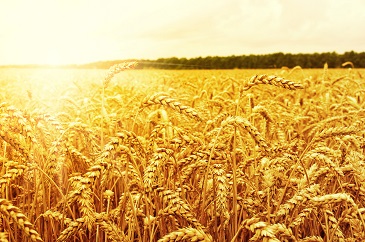The DNA of drought tolerant crops

Related topics
Agriculture & Forestry Innovation Sustainable agriculture and forestry Belgium France Germany Hungary Italy Netherlands United Kingdom Australia Turkey United States of AmericaAs the world’s population demands more cereals and the climate warms up, crops that produce good yields using less water can keep the pressure off agricultural land. Researchers from the DROPS project are uncovering genetic patterns linked to water-efficiency and drought-resistance in maize, durum wheat, bread wheat and sorghum.
The EU-funded project has developed methods to find parent plants with the characteristics – or traits – that crops could one day need. It has also built climate and crop models to predict which genes to promote in seeds.
Consumers and plant breeders are the ultimate beneficiaries of this work, with the latter getting a helping hand to adapt more efficiently to new growing conditions.
The international consortium – which includes Australian partners is also increasing the scope for scientific research. “We wanted to support a multi-disciplinary approach to change the way that academic research looks at drought tolerance in plants” says project coordinator François Tardieu, Director of Research at France’s National Institute for Agricultural Research.
“There are no ‘miracle’ genes,” he explains. “Our research aimed to identify the regions in plant DNA that control key traits for the main drought scenarios in Europe.” So far, the consortium has found many regions that could control traits associated with tolerance to drought and high temperatures. “We will continue to study these for many years after the project to describe everything in full,” says Tardieu.
Targeted analysis
Combining the expertise and resources of academics and crop breeders, DROPS studied plants for four characteristics:
- the grain abortion rate, which affects how much grain plants produce during a drought;
- maintenance of vegetative growth (including leaf growth) during a drought, which affects the size and number of ears and so the amount of grain each plant produces;
- root system architecture, which affects how much water and nutrition plants can take from the soil;
- transpiration efficiency, which measures how efficiently plants use the water they take up.
Collectively, these indicate how well a cereal plant can grow and produce grains in hot, dry conditions.
To find out which plants have the best characteristics in different climates, a variety of lines from the studied species were grown in fields across Europe and Australia. The same lines were grown in robotised platforms in controlled conditions to measure their characteristics precisely.
The plants were then analysed for how well they performed for the target traits in multiple environments, using a computer platform developed by the project. The software is able to process large numbers of plants quickly, perform genetic analyses and organise the results.
With this information to hand, the researchers looked for variations in the plants’ genetic make-up that corresponded to performance in the target traits. In particular, they were interested in finding alleles – forms of a single gene – that could be inherited to breed drought resistance in future crops.
They then combined the genetic information with a computer model based around four drought scenarios in Europe between the present and 2050. Based on the Australian APSIM crop model, the DROPS model simulates how useful different plant alleles would be in future climate scenarios.
Unlike simpler models, the DROPS simulations take into account genetic variation within a species. This makes the predictions of the impact of climate changes more realistic than simulations that assume no genetic variation between current and future years.
Data for development
The project will publish all of its results. Seed companies will then be able to use the information to develop new varieties of crop species that produce well in hot climates.
DROPS is also running practical courses – both hands-on and online – on its outcomes for students and researchers. “DROPS will have a lot of sons and grandsons,” says Tardieu. He predicts that the project’s database will continue to be useful for several decades, providing datasets to test future plant models.
Robotised phenotypic platform, PhenoArch
© François Tardieu
